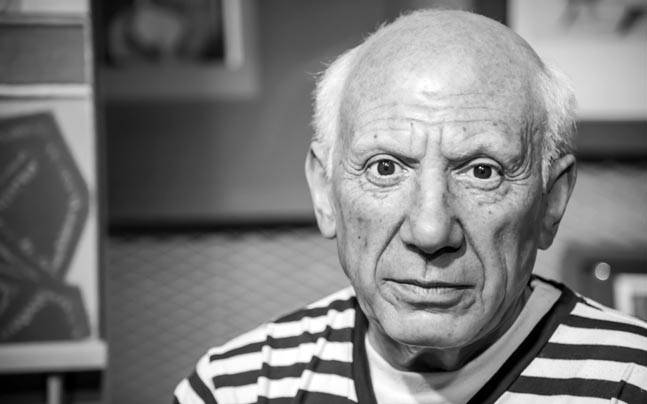PABLO PICASSO’S artworks hang in galleries thousands of kilometres away from his original hometown of Malaga, with several key pieces now adorning the walls of Asian collectors.
His posthumous popularity has been steadily growing in the Asia market, with recent winning bids of his artworks going east.
“Buste de femme” (1953), a portrait of Picasso’s partner and muse Françoise Gilot, was put up for auction for the first time in 40 years at Sotheby’s in London last month. It sold for £4.3 million to an Asian private collector.
Picasso’s “Claude et Paloma” also sold for $28.2 million to a Chinese conglomerate Dalian Wanda Group in 2013 in New York.
Although he never travelled to Asia himself, people there knew of the Spanish-born artist as early as the 1910s. He mingled with famous Chinese influences throughout his life, including renowned Chinese education reformer Cai Yuanpei, the ‘Picasso of China’ Zhang Daqian, and Ming painter and poet Tang Yin.
Picasso also drew inspiration for some of his artworks from the region. ‘Massacre in Korea’ painted in 1951, is thought to represent his critiquing response to America’s involvement in the Korean War and the resulting violence.

Musashino Art University professor Masayuki Tanaka said Picasso had a connection with Japanese painter Taro Okamoto.
“Picasso told Okamoto that he possessed several Japanese woodblock prints, and that they were not refined ones, but earlier, more primitive ones,” Tanaka said.
One can see Tang Yin’s influence in the structure and simplicity of the trees in Picasso’s landscape painting view of the French Riviera town Juan-les-Pins.
Famous Asian artists have in turn been inspired by Picasso. Simon Fujiwara’s “Who vs Who vs Who? A Picture of a Massacre” created last year, references Picasso’s Massacre in Korea and Guernica.

Chinese ink art master Qi Baishi created his own interpretation of Picasso’s famous dove images in 1952, titled “Peace Dove.” The dove, often seen as a universal symbol of peace, features alongside a vase and lotus flowers in Baishi’s work. The Chinese words for lotus (he) and vase (ping) make heping — the Chinese word for “peace”.

The ‘Picasso for Asia: A conversation’ at M+ Museum in Hong Kong, is currency showcasing more than 60 Picasso works, on loan from the Musée National Picasso-Paris. The works hang alongside 130 from Asian artists continuing an artistic dialogue.
But it’s not the first time Picasso’s works have been exhibited in Asia.
As early as 1913, a local Japanese art journal reproduced his 1909 cubist painting “Woman with a Mandolin.” Six years later, his works were shown in China.
More recently, in 2010, Hong Kong hosted ‘Modern Masters,’ an exhibition dedicated to modern and impressionist art. Former Sotheby’s International Chair Patti Wong, said this exhibit was a ‘launch pad’ to introduce private sales to buyers in mainland China, Hong Kong and Taiwan.
The first painting sold in the exhibition was a Picasso.

British auction house Christie’s sold Picasso’s first artwork on the ground in China in 2013. “Homme assis” sold to a private collector in Shanghai for $1.5 million.
More than 300,000 visitors passed through the doors of Beijing exhibit ‘Picasso – Birth of Genius’ in 2018, demonstrating the artist’s popularity with the general public too. A few years earlier, more than 300,000 people also viewed the 226 works brought to South Korea.

READ MORE:
Click here to read more News from The Olive Press.








